Why Rembrandt Lighting is still (rightly) a classic

We open Lightroom. We look at the image. It's correct: in focus, well-exposed, the subject is smiling. But it's flat. Two-dimensional. It's missing... something. It's missing that pathos, that sense of three-dimensionality that separates a simple "photo" from a "portrait".
That "something" is almost always the same thing: the conscious management of shadows.
In the world of portrait photography, there's one lighting setup that, more than any other, serves as the dividing line between amateur and professional: Rembrandt lighting.
It's named, obviously, after the 17th-century Dutch master, Rembrandt Harmenszoon van Rijn. And no, he didn't have a 120cm octagonal softbox. He had tall windows, dark rooms, and an understanding of chiaroscuro that literally defined Baroque painting.
His technique? To use light not just to illuminate, but to sculpt, revealing form through deep shadows and soft transitions.
In photographic terms, Rembrandt lighting is defined by a single, iconic detail: a small triangle of light on the subject's shadowed cheek. This isn't a stylistic quirk; it's the visual proof that we have created depth.
In this definitive guide, we won't just tell you "put a light at 45 degrees." You can find that anywhere. We're going deeper. We'll analyse the physics of light, the psychology of shadows, the technical choice of modifiers, camera settings, and how to adapt this setup anywhere, from a living room window to a complex video set.
Ready to stop "taking photos" and start "creating images"?
Anatomy of a masterpiece (what exactly is the Rembrandt triangle)
Before setting up stands and flashes, we need to understand what we're looking for. The signature of this setup is that famous triangle of light on the shadowed cheek.
But beware: not every patch of light is a "Rembrandt". To be technically correct, the triangle must follow two rules:
-
It must not be wider than the eye it is below.
-
It must not be longer than the nose.
This triangle is formed because the shadow cast by the subject's nose connects with the natural shadow of the cheek, "closing" the illuminated area. If the nose shadow doesn't touch the cheek shadow, you're creating a different pattern (probably Loop Lighting). If half the face is completely in shadow, it's Split Lighting.
Rembrandt is the perfect balance. It is a low-key setup by nature, meaning it thrives on contrast and a significant portion of the face being in shadow. We aren't trying to light everything; we are trying to reveal form.
The psychology: why does it work?
Why are we so drawn to this look? Our brain is programmed to interpret shadows as indicators of depth and form. A front-lit face (like from an on-camera flash) appears flat, wide, and lacking structure. It's an image that "informs" (that person is Bob), but doesn't "tell a story".
Rembrandt lighting, on the other hand:
-
Sculpts: It emphasises the cheekbones and jawline.
-
Adds three-dimensionality: It "lifts" the subject from the background.
-
Creates mood: Shadows introduce mystery, drama, introspection. It's lighting that suggests an inner story.
It's the preferred setup for artistic portraits, professional headshots that aim to convey depth (think of an author or a CEO), and for anyone who wants a portrait that forces the viewer to pause for a second longer.
The basic setup (your first Rembrandt light)
Let's start with the essentials. You need three things: a subject, a camera, and one light source.
Yes, just one. Complexity is the enemy of learning.
Position is everything: the clock metaphor
Imagine your set as a clock face laid on the floor.
-
The subject is at the exact centre of the clock.
-
The camera is positioned at 6 o'clock.
For a classic Rembrandt setup, your Key Light will be placed:
-
At roughly 4 o'clock (or 8 o'clock). This creates the famous 45-degree angle relative to the camera-subject axis.
-
Higher than the subject's eye level, angled down (by about 45 degrees).
This is the crucial point: height. It's the downward angle that allows the light to skim the bridge of the nose and create the shadow that defines the triangle. If the light is too low (at eye level), the nose shadow will be horizontal or absent, and the triangle won't form.
Finally, ask your subject to turn their face slightly towards the light. The "short side" of the face (the one further from the camera) will be the one that is lit. This, by the way, is called Short Lighting, a technique that tends to slim the face and increase the drama (more on this soon).
Basic Setup Checklist:
-
Subject in the centre, 1–1.5 m from the background (more distance = darker, cleaner background).
-
Camera at 6 o'clock.
-
Key light at 4 or 8 o'clock (45° to the side of the subject).
-
Key light above the head at a 30–45° height, angled down towards the eyes.
- Light-subject distance: 80–150 cm for LED/flash with a medium softbox (60–90 cm).
-
Subject's face turned slightly towards the light but not front-on; micro-rotations of 5–10° make all the difference.
- Background: neutral or dark to emphasise contrast; possibly a mid-grey for flexibility in post.
-
Observe: does the triangle appear? Adjust the angle and height millimetre by millimetre until you're satisfied.
7-Step Procedure
-
Position the subject and lock off the framing (medium shot: 85–135 mm FF; head and shoulders: 70–105 mm FF; on APS-C, multiply by the crop factor).
-
Place the key at 45° to the side and raise it until you see a catchlight in the camera-side eye.
-
Chase the triangle: rotate the subject a few degrees towards the light until the nose shadow touches the cheek shadow.
-
Adjust the light's distance: closer = more contrast (inverse square law), further = more even light.
-
Choose the modifier (medium softbox for balance; beauty dish for punch; umbrella for broad softness).
-
Evaluate the lighting ratio (key vs. fill reflected/second light) between 1:2 and 1:4 for a classic Rembrandt.
-
Lock in camera settings (see dedicated sections) and run a series of quick tests with micro-adjustments.
 The basic Rembrandt lighting setup. The light is positioned at 45° to the subject and angled down from above. The camera is shooting the "short" (more shadowed) side of the face.
The basic Rembrandt lighting setup. The light is positioned at 45° to the subject and angled down from above. The camera is shooting the "short" (more shadowed) side of the face.
The physics of light (the "nerdy" part that makes the real difference)
Anyone can put a light at 45 degrees. The difference between an amateur and a professional result lies in understanding the light.
1. Quality of light: hard vs. soft
Not all Rembrandt lights are equal. The look of your portrait depends on the quality of the light, which is determined by the relative size of the light source compared to the subject.
-
Hard Light: Comes from a small light source (relative to the subject). It produces sharp, defined shadows with rapid transitions between light and dark. It's very dramatic, raw, almost unforgiving. It emphasises every detail, including skin imperfections.
-
Examples: The midday sun, a speedlight with no modifier, a bare bulb.
-
-
Soft Light: Comes from a large light source (relative to the subject). It produces soft, "open" shadows with gradual transitions. It's more forgiving, flattering, and creates a dreamier, more painterly mood.
-
Examples: An overcast sky (which is a giant natural softbox), a flash fired into a large softbox or a diffusion umbrella.
-
The trick: To make your light softer, you don't just use a modifier; you must move the modifier closer to the subject. An 80cm softbox 3 metres away is a small source (hard light). The same softbox 50cm from the face is an enormous source (very soft light).
2. The inverse square law (and why it changes everything)
Here it is, the nemesis. But it's simpler than it sounds and fundamental for controlling contrast.
The law states: The intensity of light decreases with the square of the distance from the source.
Translation for photographers:
-
If you move the light from 1 metre to 2 metres away from the subject (doubling the distance), the light hitting them isn't half as strong, it's one-quarter (1/4) as strong.
-
If you move it from 1 metre to 3 metres, the light is one-ninth (1/9) as strong.
Why do we care? For the light falloff.
-
Light close = Rapid falloff: If your light is very close to the subject (e.g., 50cm), there will be a huge difference in illumination between their cheek (at 50cm) and their ear (at 70cm). And there will be an even bigger difference between the subject and the background (at 2 metres).
-
Result: An incredibly sculpted face and a background that turns almost black. This is maximum drama.
-
-
Light far = Slow falloff: If your light is 5 metres away, the difference between the cheek (5m) and the background (6.5m) is minimal.
-
Result: Flatter, more even lighting that illuminates both the subject and the environment.
-
Practical conclusion: For a classic, dark, and dramatic Rembrandt, move your (soft) light source close to the subject. This will give you flattering light on the face and high contrast that "kills" the ambient light and makes the background disappear into black.
The tools of the trade (choosing lights and modifiers)
Your Rembrandt setup will change radically depending on the tools you use.
Types of light source
-
Natural Light (Window): The cheapest and (often) the most beautiful. A large window on an overcast day is a dream softbox. A window with direct sun creates a very hard, graphic Rembrandt. Control is the main challenge.
-
Pros: free, soft, believable.
-
Cons: variable; depends on the time of day and weather.
-
Setup: subject 30–60 cm from the window; window at 45°; white curtains for diffusion; possibly a dark flag on the opposite side to increase contrast.
-
Starting settings:
- ISO 100–400 · f/2.8–f/4 (if you want a soft background) or f/5.6–f/8 (if you want texture) · 1/125–1/250 s
-
-
Speedlight (Hot-shoe flash): Portable, cheap. On their own, they are a hard light source. They become incredibly versatile when paired with a small portable softbox or an umbrella.
-
Studio Strobe: The professional choice. Powerful (allowing for closed apertures and low ISOs), fast (quick recycle times), and consistent. The modelling lamp helps you see where the shadows will fall before you shoot.
-
Pros: power, freezing motion, shot-to-shot consistency.
-
Cons: requires some experience with sync, HSS, light meter reading.
-
Recommended modifiers: 60–90 cm softbox (great compromise); 55 cm beauty dish with diffuser for a sharper triangle; grids (20–40°) to control spill.
-
Starting settings (dark studio):
-
ISO 100–200 · f/8 · 1/160–1/200 s (below sync speed) · flash power adjusted to expose skin at ~+0.3/+0.7 EV above mid-grey.
-
Measure with a flash meter 1 m from the face, dome towards the camera.
-
-
-
Continuous Light (LED): The king of What You See Is What You Get. Essential for video, they have also become excellent for photography. They allow you to adjust height and angle while seeing the effect on the subject's face in real-time.
-
Pros: you see the shadows in real-time; easy for beginners and video.
-
Cons: less power → higher ISOs or wider apertures; watch out for flicker at high shutter speeds.
-
Modifiers: similar to flash. With thin LED panels, use dedicated softboxes/lanterns.
-
Starting settings (dimly lit room):
-
ISO 200–800 · f/2.8–f/5.6 · 1/100–1/200 s (static portrait).
-
Fixed White Balance (e.g., 5000 K) for colour consistency.
-
-
Golden rule: whatever the source, the fall-off point of the nose shadow IS the compass. Look for it to join the cheek, and the triangle is born.
The modifiers: where the real game is played
This is the heart of the matter. The modifier defines the quality of your light.
-
No Modifier (Bare Bulb): For a raw, interrogation-room look with sharp shadows. Difficult to manage on skin.
-
Umbrella:
-
Reflective (Silver/White): You fire the flash into the umbrella. Silver is more contrasty and "crisp," white is softer. The light is broad and poorly controlled, "spilling" a lot onto the background.
-
Translucent: You fire the flash through the umbrella. It acts like a softbox, but the light is even more diffused and less directional.
-
-
Softbox (Rectangular/Square): The workhorse. Creates a soft, directional light. "Strip" versions (narrow and tall) are excellent for full-length portraits.
-
Octabox (Octagonal): The favourite for portraits. Being rounder, it creates a more natural and pleasing catchlight (reflection) in the subject's eyes.
-
Beauty Dish: The secret of fashion portraits. It's a hybrid. It's harder than a softbox but softer than a bare flash. It creates punchy contrast but with an enveloping quality. Fantastic for emphasising skin texture and cheekbones.
-
The Grid: The accessory that changes everything. It's a honeycomb grate that attaches to the front of softboxes, beauty dishes, or reflectors. Its sole purpose is to narrow the beam of light, preventing it from scattering. Want a dramatic Rembrandt with a black background even if you're in a white room? Use a grid. It directs the light only onto the subject, leaving everything else in darkness.
Modifiers compared (and how I would choose)
-
60×90 rectangular softbox: my “daily driver”. Legible triangle, soft transitions, natural catchlight.
-
90/120 octabox: more wrapping light; softer triangle, ideal for mature skin.
-
55 beauty dish (with diffuser): slightly harder edges, skin with micro-contrast; perfect for a character portrait.
-
White umbrella: quick, cheap; watch out for spill onto the background → use flags.
-
Honeycomb grid: when you want to keep the background dark without giant flags.
Practical choice: at home or in a tight location → 60/80 cm softbox with a grid; in a large studio → beauty dish + black panels to control reflections.
 The difference in light "quality". On the left, a small source (hard light) creates sharp shadows and drama. On the right, a large source (soft light) creates painterly and flattering transitions.
The difference in light "quality". On the left, a small source (hard light) creates sharp shadows and drama. On the right, a large source (soft light) creates painterly and flattering transitions.
The "democratic" Rembrandt (using window light)
No flash or lights? Not an excuse. Rembrandt (the painter) used windows.
The setup is identical, but your "key light" is your window.
-
Choose the right window: A large window, preferably not in direct sunlight (unless you're looking for a hard effect). A north-facing window is ideal as it provides consistent, soft light all day.
-
Turn off the lights: The first thing to do is turn off all artificial lights in the room. Your eye compensates for them, but the camera will see a nightmare of mixed colour temperatures (the orange light from the bulb and the blue light from the window).
-
Position the subject: Place the subject close to the window. Remember the inverse square law? The closer they are, the softer the light will be and the faster it will fall off, creating contrast.
-
Find the angle: Have the subject rotate until the window is at about 45 degrees to their face. The subject should not be looking out of the window, but parallel to the wall it's on, or slightly inwards.
-
Control the light:
-
To soften: If the light is too hard, use a white translucent curtain. It's a perfect diffuser.
-
To increase contrast: This is the professional's trick. Take a black panel (cardboard, a piece of painted polystyrene, a negative fill panel) and place it on the opposite side of the face (the shadow side). Instead of filling the shadow, it will absorb light, making it deeper and the portrait more punchy.
-
To reduce contrast: If the shadow is too dark, use a white panel (a reflector, another piece of cardboard) to "bounce" some of the window light back into the shadow side. This is called fill light.
-
Variations on a theme (when you can break the rules)
Once you've mastered the basic setup, you can start to play.
1. Short Lighting vs. Broad Lighting
This concept is fundamental and defines which side of the face you shoot from.
-
Short Lighting: The light hits the side of the face further from the camera. The camera photographs the "short" side, i.e., the one more in shadow.
-
Effect: It slims the face, creates more drama and depth. The classic Rembrandt is almost always Short Lighting.
-
-
Broad Lighting: The light hits the side of the face closer to the camera. The camera photographs the "broad" side, i.e., the one that is more illuminated.
-
Effect: It widens the face, creates a more open and less dramatic look. It's often used for subjects with very thin faces or for more "commercial" portraits.
-
You can switch from one to the other simply by moving your position (the camera) to the other side of the light, without moving the light or the subject.
2. The "Fill" (Fill Light)
A pure Rembrandt can have very deep shadows (completely black). If you want to recover detail in the shadow side (perhaps for a corporate portrait), you need to add a fill light.
You can do this in two ways:
-
Reflector (Passive): A white/silver panel placed on the opposite side that "bounces" the key light. It's natural and easy to manage.
-
Second Light (Active): A second flash or LED, placed on the opposite side, at a very low power (e.g., 2-3 stops less than the key light). It should only "open up" the shadows, not create a second set of lights.
3. The Kicker (or Rim Light)
To separate the subject from the dark background, you can add a third light: a kicker (or rim light). It's a light, often hard and without a modifier (or with a grid), positioned behind the subject, on the shadow side. It will hit the edge of the cheek and hair, creating a bright outline that "lifts" the figure from the background, lending an incredibly professional and cinematic look.
Backgrounds, distances and contrast control
-
Dark background (black/charcoal): maximises drama, watch for separation → consider a very light rim/hair light or just tonal separation in post.
-
Medium background (18% grey): versatile; you can darken or lighten it with the subject-background distance + light power.
-
Texture (wood, raw wall): Rembrandt works beautifully with this, but don't let it steal the show: keep it out of focus at f/2.8–f/4.
Recommended distances:
-
Subject-background: 1–2 m at home; 2–3 m in a studio.
-
Light-subject: 0.8–1.2 m (60–90 softbox), 1.2–1.6 m (120 octa).
Camera settings (the exposure triangle at the service of the portrait)
You've positioned the lights. Now, what to set on the camera? There's only one answer: Manual Mode (M).
When working with flash, the camera can't meter the light correctly on auto. You are in command.
The lens (Lens Choice)
The choice of lens affects the perspective and compression of the face.
-
35mm-50mm: Great for environmental portraits, where you see a bit of context. Be careful getting too close: a 35mm close to the face creates distortion (big nose, small ears).
-
85mm (The King): The quintessential portrait lens. It allows you to be at a comfortable distance from the subject, doesn't distort features, and produces a pleasing compression, blurring the background beautifully.
-
135mm: For extreme compression and isolation. It produces very "intimate" and flat (in a good way) portraits, almost painterly.
The settings (your starting point)
When using flash:
-
ISO: 100 (or your native minimum). We want maximum image quality and zero noise. The power comes from the flash, not the sensitivity.
-
Shutter Speed: 1/160s (or your flash sync speed). This speed is fast enough to "cancel out" the ambient light in the room. The only light the camera will record is your flash.
-
Aperture (Diaphragm): f/5.6 - f/11. This surprises many. "But shouldn't I shoot at f/1.8 for the blurry background?" No. In a portrait, especially a Rembrandt, we want the entire face to be in focus, from the nose to the ears. Shooting at f/1.8 would only get the tip of the eyelashes in focus. Depth and three-dimensionality come from the light, not the blur.
When using continuous light (LED or window): Here, the shutter speed does count for the exposure.
-
ISO: The lowest possible (e.g., 100-400) compatible with the light.
-
Aperture: f/4 - f/8. As above, we need depth of field on the face.
-
Shutter Speed: Fast enough to avoid motion blur (e.g., 1/125s or faster, if shooting handheld).
Focus: Always and only on the subject's eye closest to the camera. AF-C if the subject is breathing/moving.
Rembrandt in videomaking (the dramatic interview)
This setup isn't just for photography. It's perhaps the most commonly used setup in video interviews and narrative scenes to add depth.
The challenges of video:
-
The subject moves: In a photo, we can adjust the light for a perfect triangle. In video, the subject will move, nodding and turning their head.
-
The solution: Use a larger and softer light source (a large softbox or octabox). This creates a wider illuminated area, giving the subject "room to move" without falling out of the light, while still maintaining the Rembrandt mood.
-
Continuous light is a must: Obviously, LED lights are used.
-
Beware of flickering: Cheap LED lights can produce flickering visible on video, especially when shooting at high frame rates. Investing in good quality LEDs (with high CRI/TLCI) is essential.
Rembrandt lighting in video is perfect for documentary interviews, "confessional" scenes, or for giving a serious and authoritative tone to an expert.
Common mistakes (and how to fix them in 10 seconds)
You're trying, but the triangle isn't appearing. It's probably one of these problems:
-
THE MISTAKE: The triangle is "detached," the nose shadow doesn't join the cheek shadow.
-
THE FIX: The light is too far to the side (it's Split Lighting). Move the light slightly more towards the camera.
-
-
THE MISTAKE: The triangle is huge, running down to the mouth.
-
THE FIX: The light is too low. Raise it! It needs to be above the eye line to cast the nose shadow downwards.
-
-
THE MISTAKE: "Raccoon eyes" (dark, sunken shadows under the eyes).
-
THE FIX: The light is too high. Lower it slightly, or move it closer (to make it softer and more "wrapping").
-
-
THE MISTAKE: The shadow side of the face is completely black and flat.
-
THE FIX: Add a white reflector panel on the opposite side to "open up" the shadows with a little fill light.
-
-
THE MISTAKE: The background is too bright and distracting.
-
THE FIX (3 options):
-
a) Move the subject further from the background.
-
b) Move the light closer to the subject (taking advantage of the inverse square law).
-
c) Add a grid to your modifier to focus the light.
-
-
Creative variations without betraying the Rembrandt
Short vs Broad
-
Short lighting: side facing the camera is in shadow → slims the face, higher drama.
-
Broad lighting: camera side is lit → fuller face, corporate/headshot.
The light doesn't move: it's the camera (or the subject's rotation) that determines short/broad.
Colours (gels and background)
-
Keep the key light neutral for correct skin tone.
-
Colour the fill or background: amber for intimate warmth, blue for a cinematic mood.
-
Light CTO/CTB gels (+/− 1/4) to slightly shift the atmosphere.
Rim/hair and separation
A hair light (small, high, behind) at –2 stops separates the subject from the dark background without stealing the show. Use a grid to avoid it spilling onto the lens.
Narrative environments
Classic Rembrandt on a dark background? Yes. But also in an environment: an artist's studio, a workshop, a chef's kitchen. Maintain the setup and add controlled fill to bring the context to life.
Different spaces, same rules (adapted well)
Home studio
-
Low ceilings: bounce off the white ceiling (a "fake" key from above) and add a black panel to the side to recreate contrast.
-
Small rooms: the walls act as fill: use black flags (cardboard/foam) to keep the shadows clean.
-
Minimal gear: speedlight + 60cm collapsible softbox + stand + white/black panel.
Outdoor
-
Open shade: put the subject in the shade (porch, north side of a building) and use a flash as the key at 45°.
-
Golden hour: the sun can be a warm fill: set the key slightly above it to maintain the triangle and overpower the shadows.
-
HSS: useful for working at f/2–f/2.8; remember you lose power in HSS → move the light closer.
Professional studio
-
Total control: dark walls or panels absorb reflections; grids and flags define the contrast.
-
Workflow: build the key Rembrandt first, then add hair/background lights if needed. Each light does one job only.
Beyond the portrait: still life, food, product
The same principle sculpts objects and textures.
-
Still life: key at 45°, negative fill on the opposite side for deep shadows; triangles of light become "islands" on curved surfaces.
-
Food: key from the side/above; light fill from the front; triangle as the main highlight on meats/vegetables.
-
Product: add stripboxes for lining on the edges and control specular reflections with polarisers.
Post-production (enhancing, not creating)
One final note. The Rembrandt is created on set, not in post-production. Lightroom or Photoshop are only used to refine the masterpiece.
Use Dodging and Burning tools to accentuate the result:
-
Dodge: With a low-intensity brush, lightly "brighten" the triangle of light and the catchlight in the eyes to make them "pop".
-
Burn: With another brush, gently "darken" the shadow side (if necessary) to increase the contrast ratio and the drama.
-
WB and skin tones: no extreme shifts on the key light; even out small variations with HSL.
-
Clarity/Texture: +5/+10 only on hair/beard/eyes; –5 on skin where needed.
-
Targeted vignetting: emphasise the shadow side, keep the guiding eye bright.
-
B&W: Rembrandt holds up very well in black and white; work the mids to keep the skin alive, raise the whites slightly.
Don't overdo it. Post-production should only provide the final 10% of "punch" to an already excellent lighting setup.
Frequently Asked Questions (FAQ)
How big should the triangle be?
Roughly as wide as the eye and as long as the bottom of the nose. If it's bigger, you're veering into loop/broad lighting.
Can I do this with a desk lamp?
Yes. Place it high, at 45°, with diffusion (baking paper at a safe distance or a commercial diffuser) and watch for the triangle.
Do I absolutely need a second light?
No. "Pure" Rembrandt is one-light + a reflector. A second light is only for fine control or a commercial look.
Softbox or beauty dish?
Softbox for versatility; beauty dish when you want micro-contrast and a more defined catchlight.
How do I manage glasses and reflections?
Raise the key light slightly and angle it further down; have the subject tilt the arms of their glasses; use a polariser only if it doesn't adversely affect skin/eyes.
Example setups (described) to replicate
Setup A – Classic Rembrandt, soft
-
Key: 60×90 softbox with grid, 45° to the side, 30° high, 90 cm from the face.
-
Fill: white panel 40 cm from the shadow side.
-
Camera: 85 mm, f/5.6, 1/160 s, ISO 100 (flash) / ISO 400 (LED).
-
Background: black, 1.5 m away.
Setup B – Punchy Rembrandt, character
-
Key: 55 cm beauty dish with diffuser, 45°/40°, 1.1 m.
-
Negative fill: black panel very close to the shadow-side cheek.
-
Rim: strip light with grid at –2 stops behind the shadow side.
-
Camera: 105 mm, f/8, 1/200 s, ISO 100 (flash).
Setup C – Poetic Window
-
Key: north-facing window with white curtain, subject 40 cm away, 45° to the glass.
-
Fill: none, or a white reflector resting on a chair.
-
Camera: 50 mm, f/2.8, 1/200 s, ISO 320–640.
-
Mood: muted colours, WB 5200 K.
Conclusion: beyond the setup
L'illuminazione Rembrandt is much more than a triangle of light on the cheek. It's a philosophy. It's the conscious decision to use shadow as a narrative tool just as much as light.
Mastering this setup forces you to understand the physics of light, the quality of modifiers, and the anatomy of the human face. It teaches you to truly observe.
Our advice? Start today. You don't need a studio. Grab a desk lamp (a hard source), a subject (even yourself in a mirror), and a dark room. Find that angle. Find that height. Find the triangle.
Once you've seen it, you'll start to see it everywhere: in films, in paintings, in the way the evening sun hits a person's face. And from that moment on, your portraits will never be the same.
Practical Takeaways
-
The Goal: Create a triangle of light on the subject's shadowed cheek.
-
Basic Setup: Key light at 45° to the camera and angled 45° down from above (above the eyes).
-
Hard vs. Soft Light: A small source (bare flash) creates sharp shadows. A large source (softbox) creates soft shadows.
-
The Secret to Contrast: Move the light closer to the subject. This makes it softer and causes the light to "fall off" more rapidly, darkening the background (Inverse Square Law).
-
The Problem (Window): Mixed light (ambient + window). Solution: Turn off all internal lights.
-
The Problem (Background): The background is too bright. Solution: Use a grid on your modifier or move the subject further from the background.
-
Settings (Flash): Manual. ISO 100, 1/160s, f/8.
-
Pro Variation: Add a kicker (a light from behind) on the shadow side to "separate" the subject from the background.
By accepting you will be accessing a service provided by a third-party external to https://insightadv.uk/

 IT
IT  EN
EN 
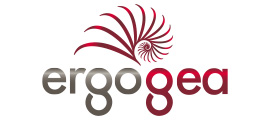



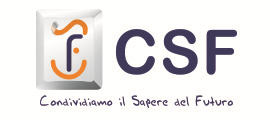





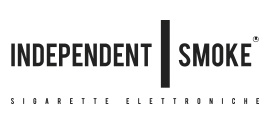

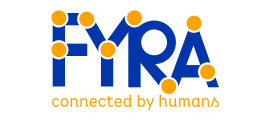

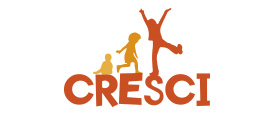


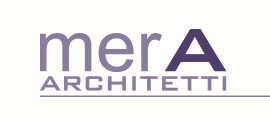




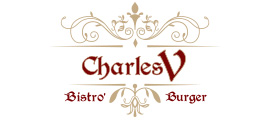


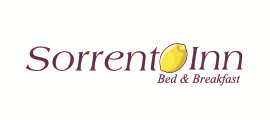
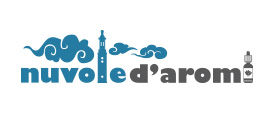



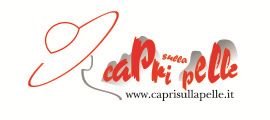



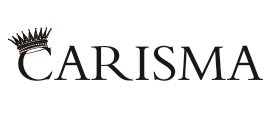



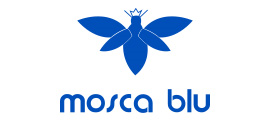
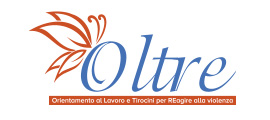
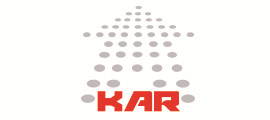























Comments